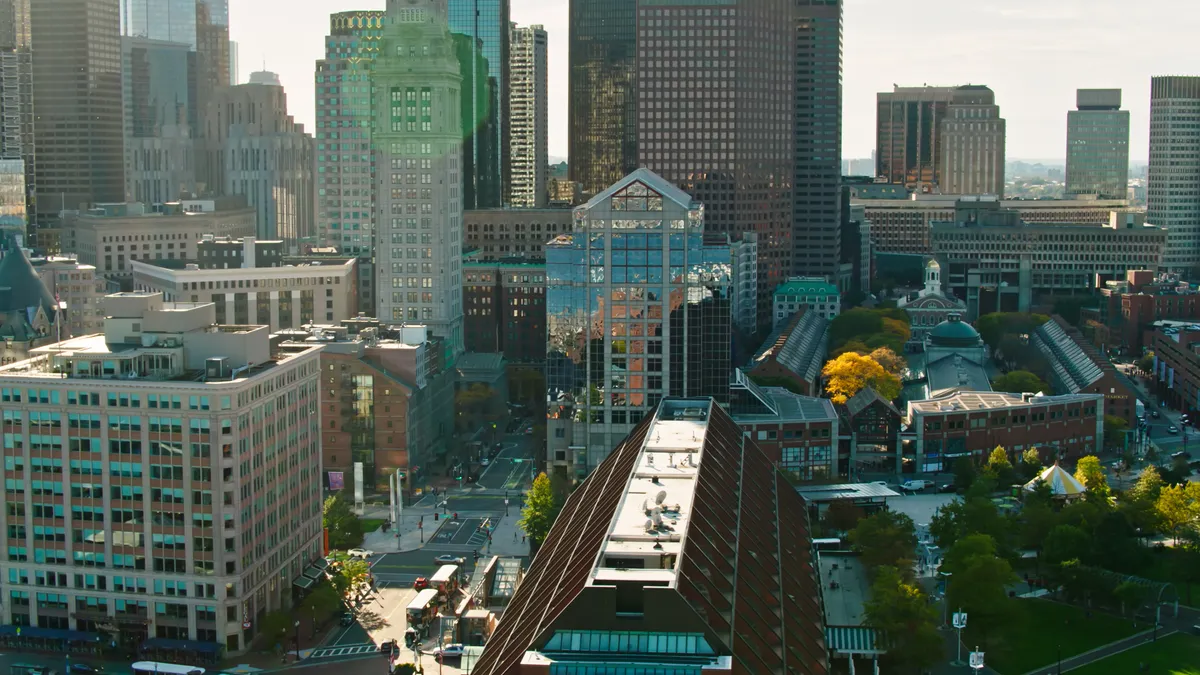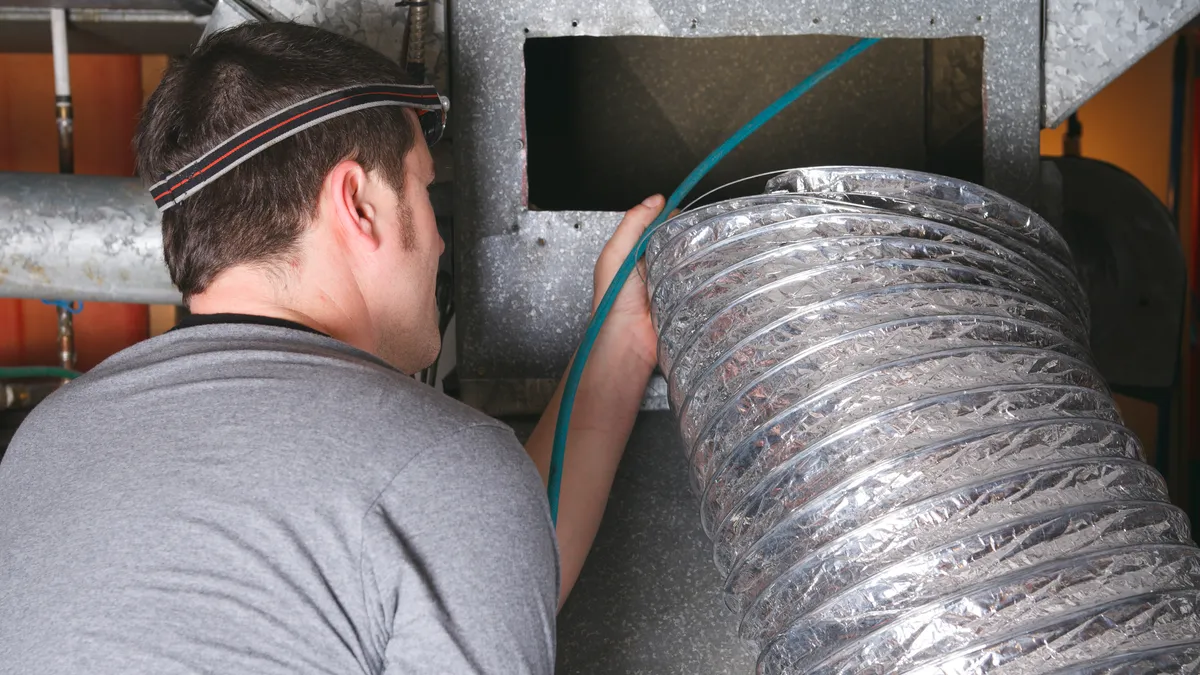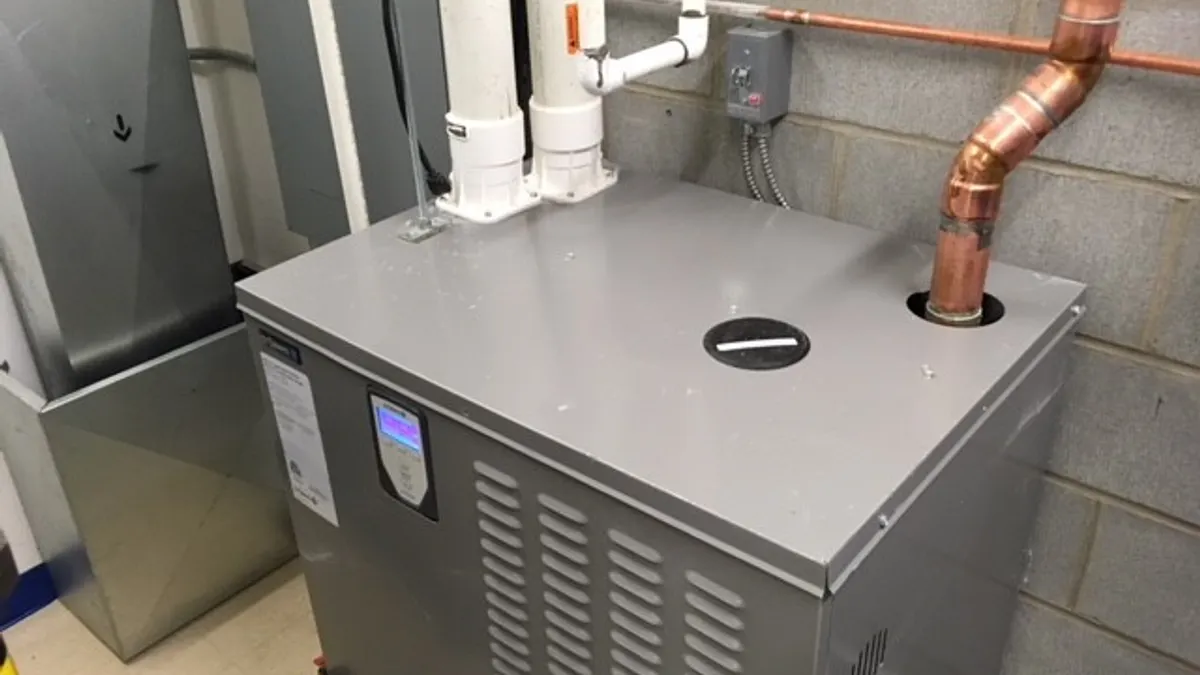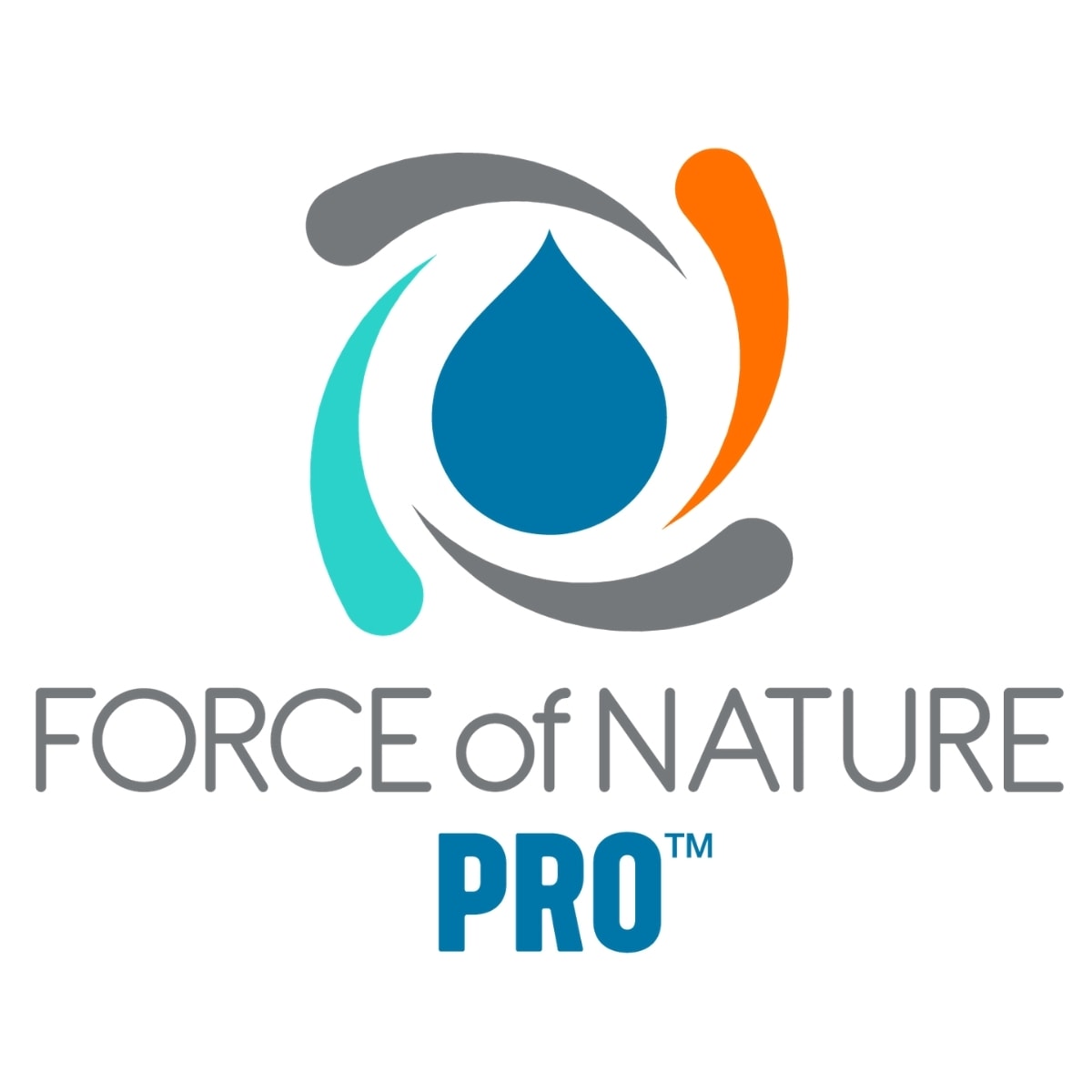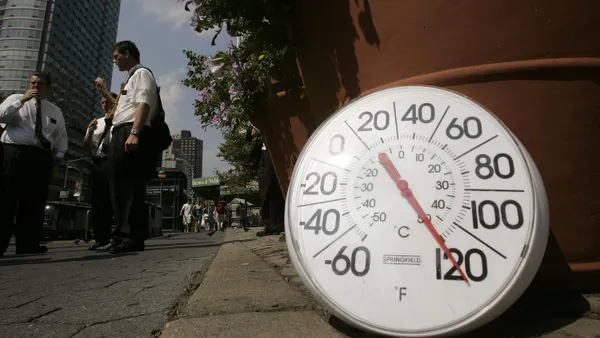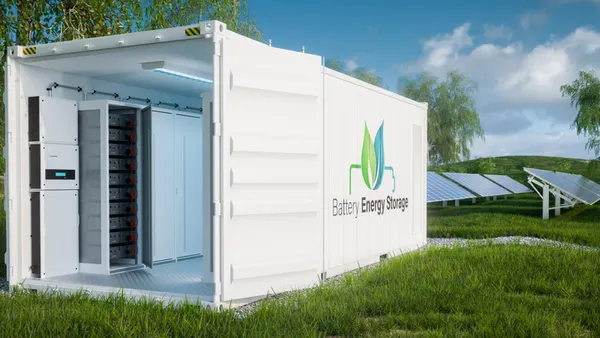Rising energy costs, along with tenant demands, ESG commitments and state and local ordinances, are leading facilities managers to integrate sustainability measures into every facet of their operations.
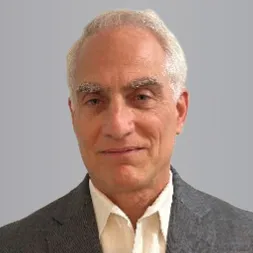
Michael Gill has navigated these issues across more than three decades in building operations, facilities engineering, energy conservation and sustainability. Gill recently joined C&W Services as senior director of client services for New England. C&W Services, a wholly-owned subsidiary of Cushman & Wakefield, is tackling sustainability in the integrated facilities management services it provides to its more than 600 customers in North America. Gill was previously director of operations at the Federal Reserve Bank of Boston, where he oversaw day-to-day building operations, including sustainability and energy conservation efforts. Prior to that, he spent about 23 years with Equity Office Properties, with his final role there being manager of portfolio engineering.
In an interview with Facilities Dive, Gill discusses his views on implementing sustainability initiatives, from low-hanging fruit to long-term capital expenditure planning; opportunities to streamline maintenance and operations; and technologies that can be used to drive energy and cost-savings.
Editor’s note: This story has been edited for length and clarity.
FACILITIES DIVE: How has sustainability in maintenance and operations evolved in the past 10 years?
MICHAEL GILL: Companies now want to do the right thing, and they don't mind investing money in sustainability. We're seeing companies reduce their energy use intensity, which obviously, is a direct correlation to the carbon output. But, going one step further, they’re potentially investing in renewable energy certificates for the remaining energy use, thereby reducing that total carbon usage intensity to a very low level.
These measures cost money, but do they also save money?
An [older] mechanical chiller plant, running at peak efficiency, its energy usage might be a little higher than a [newer,] more efficient plant. You'll see companies now investing capital into that infrastructure [sooner instead of], maybe years ago, they might stretch that out a little bit. If they see a huge reduction in energy, that's going to correlate to energy savings in terms of their bottom line. There's a payback involved, and I think it's just a win for everybody.
What efforts do you want to undertake right away in your new role, and how do those lead to your bigger goals at the organization?
Once I get settled, I want to understand the properties and their energy use profiles. [Then] I want to think with my team, how can we provide value to our customer from a sustainability and an environmental perspective? If we can provide that level of value, the customer sees not only financial savings, but we [also] do the right thing for the environment.
Are there specific sectors in New England that are most important at the moment?
I think I saw that 80% of the class A properties here now will be here in 80 years. And a lot of them [are from when] Boston went through a building boom in the 1970s. They've already gone through a lot of lifecycle costs, replacements. Moving forward, you'll probably continue to see that — [but] maybe changing things based upon energy efficiency and payback analysis, and not necessarily the ‘end of useful life’ type of replacement. And I honestly think it's great. I see the financial investment being made, and everybody seems to really be doing the right thing.
For maintenance, have you seen a movement from reactive to proactive or predictive strategies?
There is a lot more predictive [maintenance] than I have seen in the past. With the sensor technology out there, you can really identify failures before they happen. You can look at a vibration analysis on a chiller, so you can identify that this is getting out of tolerance a little bit, [or] maybe the bearings need to be looked at. Having those predictive tools out there allows you to probably budget better [and] really replace things as needed, not necessarily on a time frequency.
How does the shift to predictive maintenance affect labor and strategies for ensuring that you can keep a building running smoothly?
If you use predictive maintenance, you can really allocate your resources to where they're needed. Look at a pressure drop across a filter, for instance. If you have not exceeded the manufacturer's recommended pressure drop across that filter, it doesn't necessarily need to be changed. So now, you can take that labor and allocate it to something else that might need it more. So [there are] different types of strategies where I think predictive maintenance is a huge benefit. The technology has really come a long way, with sensors and building automation systems, and everything's BACnet compliant and plug-and-play.
What are the first steps for implementing a climate action plan?
You have to calculate your energy use intensity. You get that right from your utility bills. Everything converts into a Btu. You divide it by 1000 and get your kBtu, and, divided by the square footage of the building, you get your energy usage intensity. And then you can compare that [to other buildings]. ENERGY STAR Portfolio Manager is a great tool to benchmark your building and see where you fall.
Once you identify where you're at today, you can begin putting in some targets on where you want to be in 12 months [and] 24 months. [For] a lot of the climate action plans that I've done, we've had tiered metric reduction plans. I typically do them over a five-year period, where we'll set a long-term goal, and it might be aggressive, but every year, we want to reduce [energy use] by a certain percentage to get [to the goal]. So the next [part of the] plan is, ‘Here's your goals. How are you going to get there?’
That gets into the next component, which is that you really do need good and accurate submetering. You need to know, What's the load profile for my central chiller plant? Am I using a lot of energy for that chiller? Can we reduce that in any way? How do we get there? It might be a replacement, [or] it could be a modification to the system and certain units. That's what I would do — develop my baseline EUI system targets and then look at an action plan to get there.
What are the low-hanging fruit when it comes to energy reduction strategies, and after implementing those, what is the next step?
When you look at lighting, that's been the low-hanging fruit over the past 10 years. The cost of LEDs has come down so much that everybody's done that. Another would be variable-frequency drives. Almost every motor out there now is on a VFD. There are big capital investments, like changing out a chiller, but the middle ground, in my opinion, is daily operations. How do you run that chiller plant? Does your building automation system have overrides in it? Are you over-cooling? Are you over-heating? [It could be things] as simple as steam trap maintenance or changing filters.
[Once] you’re operating the building efficiently, you'd begin looking at your long-term capital planning. That's when you need to really be efficient in planning for five and 10 years.
What are the biggest questions you have for where things are moving in the industry?
I think my question is identical to everybody else's: How are these spaces going to be used, going forward? We’ve come out of [the COVID-19 pandemic], and it's a different type of office now. That's driven vacancies up higher, because people are using the space differently. A lot of companies are hoteling now with their offices. I don't think anybody knows the answer [to] ‘Where is the commercial office space going to be in five years?’
Can changes to operations on the soft services side, like cleaning, be made? Can operators gain insights that can reduce the time and labor spent in those areas?
You may be able to adjust set points in vacant spaces, and maybe around the margins you can make some changes, [but] we still want to maintain the equipment in a class A manner. We want to clean the building in a class A manner.
When it comes to energy use and emissions ordinances, like Boston’s BERDO 2.0 and New York City’s Local Law 97, how efficient do you have to be in your operations before you can use renewable energy certificates and credits to get across the finish line?
You have to become as energy efficient as you possibly can. Renewable energy certificates do cost a little bit of money above and beyond what you pay for your electricity. So you can reduce your electrical profile through energy efficiency and capital infrastructure to the point where [you’re] really super-efficient. Now, let me get RECs to [reach] zero. I think that's how you get over the finish line. It doesn't make sense to buy the RECs and spend the money when you're not energy efficient.
Are there technologies that aren’t commercially viable today that you are interested in?
I focus a lot on metering. You've heard the expression, ‘You can't manage what you can’t meter.’ I try to implement metering programs where I can get it down at the lowest level possible. And then, if I see anomalies in my load profile, I could begin drilling into it. Chillers are one of the biggest energy consumers in your building. Some buildings have 1,500-ton chillers, and they might have five of them. So you drill it down and [ask], ‘Why did that chiller run overnight?’ And then you go in and look at the building automation. Maybe there was an override there. I call that a low-cost, no-cost strategy [for reducing energy use]. You can identify these anomalies, but you can't get there without very sophisticated metering. And I think it's well worth the financial investment.
How granular do you believe metering has to be within a facility?
In my opinion, you can get it down to per floor. Motor control centers are kind of going away, but if you look at it from just an electrical distribution perspective and then you go down. How about if I put a meter on this chiller or this air handler or this pump, and then you begin in one of these load profiles. It’s [also] very important to have time-of-use meters. The metering I like is where you get a load profile every 15 minutes. As you see [the load profile] climbing up, you could grab that and compare it to the temperature. If the temperature is creeping up, OK, but if you're not seeing the temperature rise, and you see your load go up, there's got to be a reason for it.
When it comes to heating and cooling in New England, what’s more intensive, and how do you balance those factors?
I do a lot of weather analysis, too. If I saved 15% of my electricity bill for the summer, but [the weather] was 20% cooler, that might not be such a great story. So you are really benchmarking and comparing it to weather. The first thing you have to look at is not overheating and not overcooling your space. You've got to be within the threshold of what ASHRAE recommends. And then, when you look at your energy profile [and] compare it year over year, we correct it for weather and occupancy.
How do you ensure that buildings are well-ventilated with good, clean air?
A healthy environment for building occupants [involves]ensuring that you have proper ventilation rates [and] have ASHRAE 188 plans. You don't necessarily need to be WELL-certified. But, if you're what we call certifiable, and you're doing everything right, that, to me, is important.
What are your thoughts about water use in buildings?
I am very big on water conservation. At my previous job, I tied up all of my water meters into my metering platform. Take a mechanical system like a cooling tower. I can look at that in 15-minute increments to find out how much makeup water I'm using on that cooling tower. And then we build [load] profiles and graphs. If I see something that doesn't look right, I'll send one of my folks up there, and maybe there was a stuck float, or a failure where we're just continually getting water. You can find those anomalies.
I also tied all the irrigation meters into it.. We did water conservation projects [and] put drip irrigation everywhere we could. But maybe at night, you're seeing some of these zones are on because you can see the water usage go up. Let's correct that. We don't want to impact safety. We want to make sure our restrooms work and everything, but we're trying to find and eliminate waste. A lot of people overlook that because it doesn't have anything to do with your carbon output.
Correction: A previous version of this article misidentified the Cushman & Wakefield subsidiary where Gill works. It is C&W Services. It also provided an incorrect formula for calculating energy use intensity.



